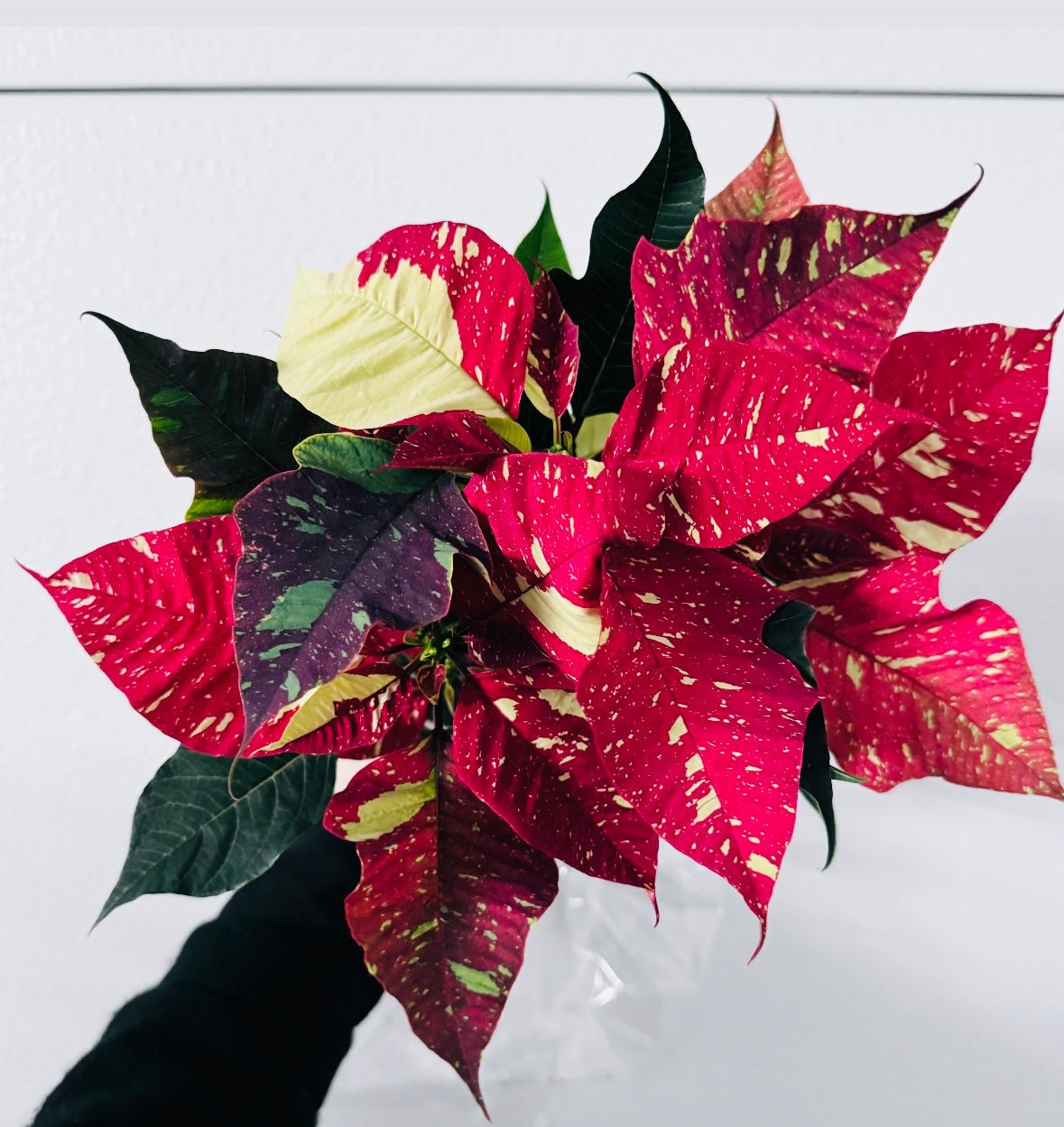The Plant Lady SF
Poinsettia (Euphorbia pulcherrima) - Red Glitter Variegated
Poinsettia (Euphorbia pulcherrima) - Red Glitter Variegated
Couldn't load pickup availability
Now is the time to order the healthiest, most beautiful poinsettias anywhere in the Bay Area! This is not your average red poinsettia!! Our poinsettias are locally grown, hand-picked for health and quality, inspected for pests, and kept in ideal conditions until they reach your home. This means that you will be enjoying your gorgeous plants for many, many months past Christmas if you so desire, as well as reducing your carbon footprint during the busiest shopping season of the year. All of this and we *still* manage to keep our prices affordable!
Interested in decorating your office or ordering in bulk quantities for an event? We have special rates for that! Contact us at theplantladysf@gmail.com to learn more.
++++++
The Poinsettia (Euphorbia pulcherrima) has a fascinating history that dates back to pre-Columbian Mexico. The plant was originally known by the Aztecs as "Cuetlaxochitl," which means "flower that withers, mortal flower" in the Nahuatl language. The Aztecs used the plant for various purposes, including as a dye for textiles and in traditional medicine.
Poinsettias gained popularity as a festive decoration and symbol of the holiday season in the United States in the early 1800s, when the first US Ambassador to Mexico brought the plant back to the states. December 12th, the day honoring Our Lady of Guadalupe in Mexico, also coincided with the blooming period of poinsettias, further enhancing its significance during the Christmas season. Over time poinsettias became (and remain!!) the best selling houseplant of all time.
As a houseplant, poinsettias are valued for their colorful bracts (modified leaves) that surround the small, inconspicuous flowers. These bracts come in various shades, including scarlet red, pink, white, and even multicolored varieties! While they are typically purchased during the holiday season, many people discard them after flowering. However, with proper care, poinsettias can be kept year round and encouraged to bloom again the following year!
The poinsettia (Euphorbia pulcherrima) has a rich history that dates back to pre-Columbian Mexico. The plant was originally known by the Aztecs as "Cuetlaxochitl," which means "flower that withers, mortal flower" in the Nahuatl language. The Aztecs used the plant for various purposes, including as a dye for textiles and in traditional medicine.
One significant aspect of the poinsettia's history is its association with the Christmas season. Legend has it that a poor Mexican girl named Pepita wanted to give a gift to baby Jesus but couldn't afford anything grand. An angel appeared to her and advised her to gather weeds from the roadside. When she placed these humble weeds at the church altar, they miraculously transformed into vibrant red poinsettias. This story contributed to the plant's association with Christmas and its popularity during the holiday season.
The plant's association with Christmas was further solidified by Joel Poinsett, the first U.S. ambassador to Mexico in the early 19th century. Poinsett introduced the plant to the United States after encountering it in Mexico in 1828. The plant was eventually named in his honor.
Poinsettias gained popularity as a festive decoration and symbol of the holiday season in the United States. December 12th, the day honoring Our Lady of Guadalupe in Mexico, also coincided with the blooming period of poinsettias, further enhancing its significance.
As a houseplant, poinsettias are valued for their colorful bracts (modified leaves) that surround the small, inconspicuous flowers. These bracts come in various shades, including red, pink, white, and even multicolored varieties. While they are typically purchased during the holiday season, many people discard them after flowering. However, with proper care, poinsettias can be encouraged to bloom again the following year.
Here are some tips for caring for poinsettias year-round:
-
Light: Poinsettias prefer bright light. Place them near a sunny window, but avoid more than a few hours of direct sunlight, as too much hot direct sun can scorch the leaves.
-
Temperature: Poinsettias thrive in temperatures between 60-75°F (18-24°C). Avoid exposing them to drafts or extreme temperature fluctuations.
-
Watering: Keep the soil consistently humid but not waterlogged. Water when the surface of the soil feels dry to the touch. Always drain excess water from the saucer to prevent root rot. Watering once a week is about right for most people.
-
Humidity: Poinsettias benefit from moderate humidity. If the air in your home is dry, consider placing a tray of water near the plant or using a humidifier - but most people in the San Francisco Bay Area will have no problem meeting this plant's humidity needs.
-
Fertilization: Feed the plant with a balanced, all-purpose fertilizer every 2-4 weeks any time the plant is actively growing.
-
Pruning: After the poinsettia's initial bloom, you can encourage a bushier shape by pinching back the stems in late spring. Wear gloves as the plant exudes a milky sap that may irritate sensitive skin.
-
Reflowering: Getting a poinsettia to bloom again can be challenging but not impossible. Starting in mid October, expose the plant to complete darkness for 14 hours each night for about 6 weeks. This mimics the plant's natural response to shorter days and longer nights, stimulating flower production. (I have had success setting a timer on my phone and placing the plant in a closet from 5pm to 8am each day).
By following these guidelines, you can enjoy your poinsettia beyond the holiday season and encourage it to bloom again in the following year!
Share



